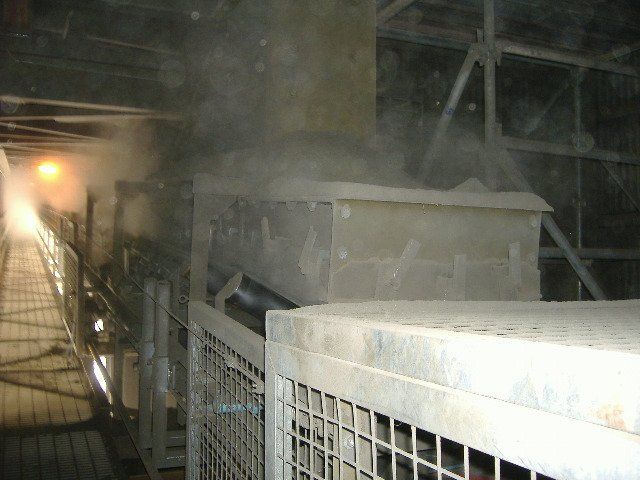Dust in Mines
Airborne dust exposure in mines and quarries poses a significant problem due to various health, safety, and environmental concerns.
ESS have a solution for that.
Bulk material movement causes mechanical fracturing, which creates very fine particles. If the tiny particles are less than 500 microns, they can become airborne and travel vast distances before settling. Most of this dust is created at transfer points, discharge points and load zones.
Dust Risks & Concerns
Serious concerns arise when dust becomes airborne and escapes from conveyor systems. Airborne dust particles are easily carried off-premises, including into townships surrounding the plant. The fine particles of dust pose a serious health risk, especially when fine particles are inhaled. Further safety risks include the increased risk of slips, trips and falls in areas of poor visibility caused by dust.
Dust can settle in a number of places and is not limited to the boundaries of the plant. It can contaminate delicate ecosystems especially in wetlands and rivers. Airborne dust can be visible over long distances which can increase regulatory interest and cause rifts between nearby towns and the plant. Depending on the material being conveyed (especially coal, phosphates, fertilisers and cement), there is a heightened explosive risk when the dust comes in contact with a spark.
Dust can settle on any part of the conveyor, which increases wear and causes increased shutdown periods, component replacement costs and maintenance, reducing production. While it is nearly impossible to stop the creation of dust, with the correct methodology and products, it is possible to contain it.

There are three key elements in controlling the creation and emission of dust: controlling the airflow, minimising free air and utilising dust suppression systems.
Controlling airflow to control fugitive material at the transfer points is achieved by actively slowing the air speed. Skirting systems and covering holes (such as inspection points) in the transfer areas minimise the amount of air exposed to the product. Dust suppression systems, such as spray systems or foam in enclosed areas, make the dust particles larger than 500 microns so it cannot be transferred by air.
Schedule Site Audit
Our specialists can help you identify areas that require improvement and provide practical solutions for dust control and suppression.
Dust Control & Management Solutions
To control fugitive material at transfer points, airflow can be controlled by reducing the air speed. This can be achieved through skirting systems and covering any holes, such as inspection points, in the transfer areas. Additionally, dust suppression systems can be used, such as spray systems or foam in enclosed areas, to make dust particles larger than 500 microns, preventing their transfer by air.
ESS R&D Innovations
-
Skirting SystemsESS Skirting Systems List Item 1
Skirting systems and covering holes (such as inspection points) in the transfer areas minimise the amount of air exposed to the product.
-
Dust Suppression SystemsMining Dust Suppression Systems List Item 2
Dust suppression systems, such as spray systems or foam in enclosed areas, make the dust particles larger than 500 microns so it cannot be transferred by air.
Call us today on 1800 074 446 for more details about our products and services.
Quick Links
Contact Information
Certifications
AS/NZS ISO 9001:2015
Safety, AS/NZ 4801:2001
ICS Registered No 946/97 & 06/2982

